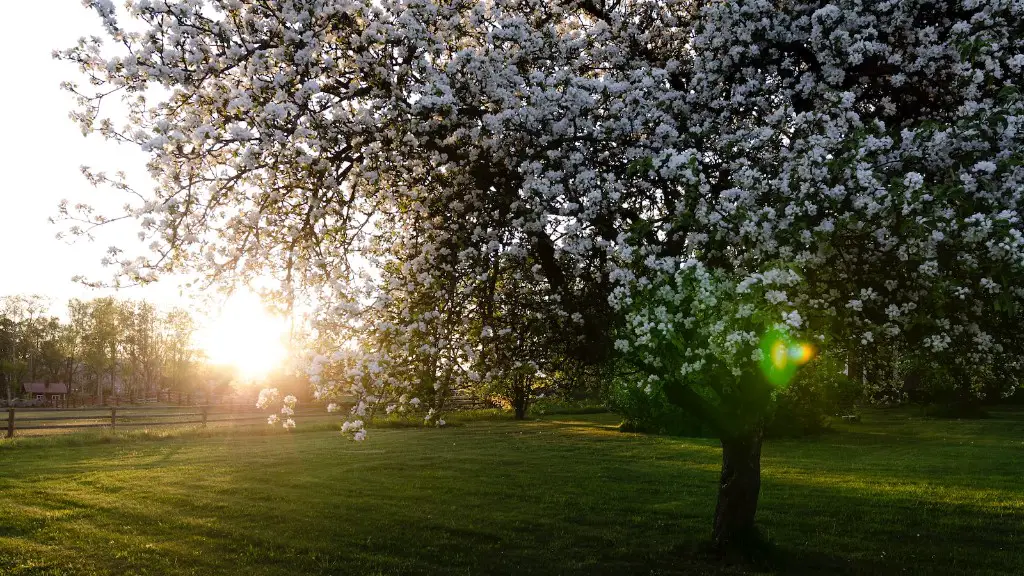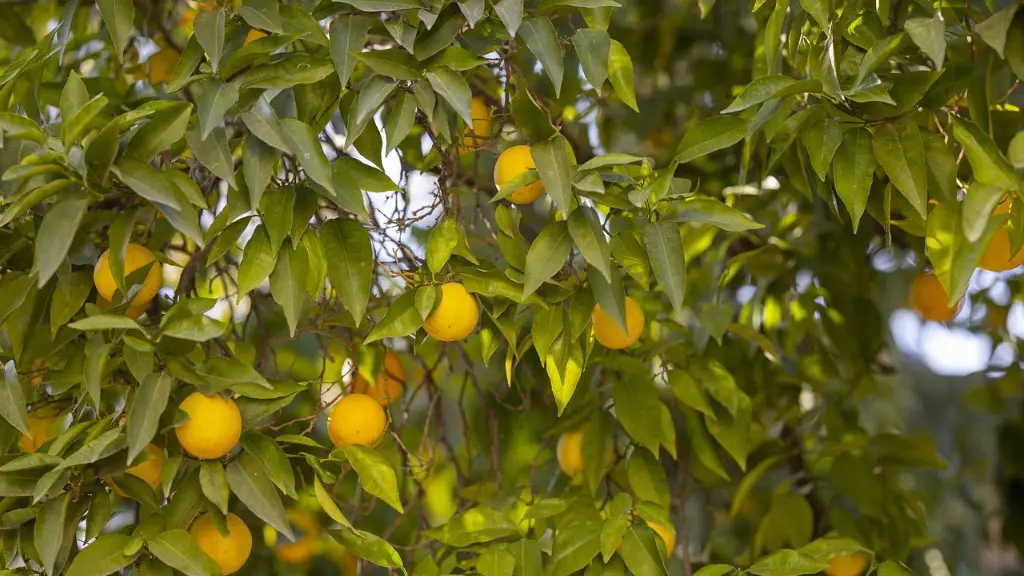Training apple trees to espalier can seem like an intricate and time consuming endeavor, however once you have established the desired pattern, it is an easy and rewarding way to cultivate a beautiful, healthy and productive apple tree. Containing fruit production by creating an attractive lattice requires patience, but is the hallmark of espalier cultivation, successfully allowing an orchard-like effect in even limited space.
Pruning and training apple trees is an artform, but if you adhere to the fundamental techniques of espalier you will achieve great results. Pruning should be done in the winter months to control the size and shape of the tree. Cut out any branches that are not part of the desired pattern, and keep the pruning light and open, to ensure maximum light and air flow essential to successful fruit bearing.
The main guidelines to training an apple tree to espalier are to select the right location, remove excessive vegetation and prepare the soil correctly. For an effective lattice form, you should keep the shape as much as possible. Create a tie system of string and wires across the framework of the apple tree, making spaces between each level to accommodate tie twine. This will help support the branches when training your tree.
The design of each espalier should be tailored to the variety of the tree, and the environment it is planted in. The best location for the tree should provide its requirements for light, water and soil conditions. Generally speaking, apple trees need a sunny spot with well-drained soil; a south or west facing aspect will provide the ideal situation from which to train and prune.
The main trick is to get the branches be in the correct position for fruiting, and to keep the pattern you have designed with careful pruning and propagation. Some may choose to propagate new branches to accentuate the design, and the ideal time for this is in the winter months.
As the tree matures, it is possible to add in various designs and patterns to the lattice. The procedure is simple and effective; however, the key is to remain patient while the tree develops and adheres to your design. What may seem like an insurmountable task can be achieved through perseverance and careful attention to the needs of your apple tree while espaliering it.
Location of Espalier Apple Trees
The very first consideration when planning the location of an apple espalier tree is ensuring the spot is sheltered from wind, has good airflow and plenty of sunshine. The ideal location for an espalier tree is a south- or west-facing aspect, which will provide optimal sunlight for fruiting purposes. Also, when choosing the spot for the tree remember to factor in the surrounding landscape; it is important to create an aesthetically pleasing, proportional landscape for viewing purposes.
Additionally, take in to account the more practical points of planting and tree maintenance from an accessible point of view. As you will have to regularly tend to the espalier tree, it should be placed in an easy to reach, comfortable space.
When positioning the tree consider the other plants surrounding the area. You don’t want to disturb the root systems of existing plants, and you should also avoid over-watering, which could spread to other plants and cause damp conditions.
In terms of soil type, apples prefer cultivated, well-drained, loamy soil– however, if the soil is poor, a generous amount of quality soil can be used on top of the existing soil, adding applicated compost and manure to the mixture. An espalier tree is a significant consideration for your garden, so it is important to assess its exact location.
Soil Preparation
Before planting an espalier tree, it is important to make sure you have laid the groundwork for success – which starts with the soil conditions in your chosen area.
Essentially you need to make sure the soil is fertile and well-drained with a pH of 5.5 – 6.0, as this will provide optimal growing conditions for the roots of your apple tree. Clay soils are naturally heavy, and will require a soil improver such as manure or compost.
If not already present, compost can be added to ensure the soil is balanced and rich with essential nutrients and organic matter. A soil test can provide the specifics of your soil such as acidity, potassium and phosphorus levels and particles size.
Once the soil test has been completed, if you need to further amend the soil you can do so using well-rotted manure, leaf mould, or a compost-based soil conditioner that combines benefits of both. Be sure to mix these amendments into the top 12 or so inches of soil as deeply as possible.
In terms of top dressing an espalier tree, it is a good idea to use a light mulch like wood chips. This will help to retain moisture in the soil and suppress weed growth. Apply a light layer of mulch around the base of the tree, but be sure to keep it at least a few inches away from the trunk and major branches.
Installing Support Structures
Once the soil is prepared, it is time to establish your tree in its new permanent home. Trees rooted in a pot should be thoroughly watered before planting them, and when planting a container-grown tree you must use the container soil and replanting technique.
When planting an espalier, you must also secure permanent support structures for the branches to begin training the apple tree. Constructing a lattice is the traditional and most popular way to do this, and it must be secure enough to support the weight of the branches and fruit.
Latticework supports come in many materials including wood, wire and posts. For wood – choose a long-lasting wood such as oak, ash or hardwood. The most commonly used wire support is galvanised steel wire, which can be installed by hammering steel posts in the ground and connecting a series of wires across it. This type of support should reach at least three or four feet above the tree.
Once the lattice is installed, string should be use to tie and secure the branches to it. The string should be able to provide the branches with enough tension to hold the desired pattern, but not so tight as to impede the growth of the branches.
Remember to regularly inspect the support structures and secure any branch ties as needed and check for any signs of damage or defect. The better the overall structure of your lattice support, the better shape you will be able to train your tree.
Training and Pruning
Pruning and training the branches of an espalier apple tree is essential to its success. To keep your pattern intact, pruning and training need to occur regularly – especially in the early stages when the tree is being shaped and formed into the desired shape.
The early stages are where most of the hard work is done, and as a general rule, pruning can be done during winter months as this is when the tree is at its most dormant. For the best results, use very sharp pruning sheers to reduce tearing and make a clean cut.
When pruning, focus on the areas where two branches meet, the branch ‘V’. During winter pruning it is important to only leave two buds in the crook of the V and avoid leaving any dead or diseased branches. This will ensure the maximising of light and airflow which is essential for healthy productivity and growth.
When training the branches, you can use pieces of lag wire or tie twine to pull new branches as needed and make the desired pattern. It is important to remember to check the tree regularly throughout the growing season and make minor adjustments as the tree develops.
Also, if the tree is producing fruiting spurs, you should prune them back to keep the pattern and manage the quantity of fruit being produced. Be sure to keep your cuts as clean and small as possible to minimize wounding.
Watering and Fertilising
Creating a successful espalier is not just about pruning and training the tree, but also making sure the tree receives sufficient water and nutrients. A well-maintained apple tree needs to be watered regularly but not over-watered. It should receive 1” of water per week to keep it healthy and well-nourished.
Additionally, a good fertiliser should be used to ensure a healthy and balanced build-up of nutrients in the soil. Compost and mulch will help regulate the temperature and retain moisture, however a balanced fertiliser is need to ensure the tree is receiving the necessary nitrogen, phosphorus and potassium for optimal growth.
It is important to remember to use slow-release fertiliser which delivers a steady, long-term nutrient availability over a number of weeks. For a quick boost of energy, use liquid or quick release fertilisers, however, too much can be damaging so careful application is essential.
Finally, regularly inspect your espalier for signs of disease or pest damage, and look for nutrient deficiency signs such as yellowing of the leaves or premature leaf drop. Taking the time to tend to your tree correctly will ensure its success and longevity.




